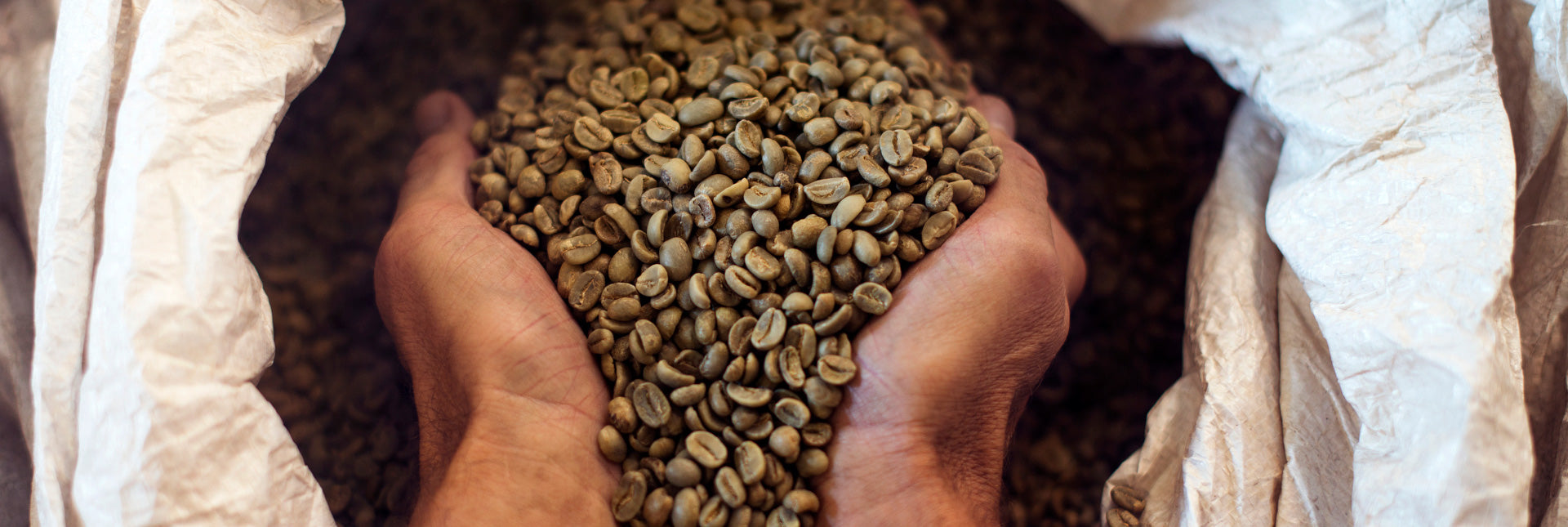Processing
For us at Cellini, quality comes first: for this reason, in our plants, green coffee, coming from plantations around the world, is blended, processed and packaged with extreme care, until it becomes the product that we have the pleasure of enjoying every day.
All the production processes are managed by a computerized system that guarantees constant control and, enriched from the great experience and passion of each person involved in production, allows us to offer you taste, emotions and quality in every cup of coffee.


Every day large bags of600/1200 kgcontaining the single origins of coffee arrive at our factory: after an initialsensory checkand passing through cleaners, sieves and iron removers, the beans are placed in the raw coffee silos.
The green coffee enters special machines where, at a temperature of around 210°/220°, it is roasted in 15/18 minutes.
This process is called "slow roasting" or "traditional" and it is the only way to bring out all the precious and refined characteristics of quality beans: this is why we at Cellini we have always adopted it and without exception. The process develops through constant roasting curves, studied blend by blend and controlled with a sophisticated computerized method: even for coffee, to obtain a product with a perfect taste, it takes time!

Immediately after roasting, with a special laboratory instrument, the degree of color of the blend is checked and compared with the parameters established by the quality laboratory: being sure of the degree of roasting is essential because, in addition to determining the color of the coffee, it plays a fundamental role inenhancing the organoleptic properties that you will taste in the cup.
The compliant blends are sorted into the appropriate silos for a period of rest well established, which serves to guarantee any perfect packaging or the best continuation of processing.
The coffee to be ground passes to the grinding units. This phase is very delicate and is constantly monitored using laser instruments. The granulometry standard is controlled in real time and, subsequently, the volume of the freshly ground product, thus obtaining a homogeneous, constant and perfectly compliant grinding with the declared standards.
To be perfect, every type of coffee needs a certain type of bean grinding, suitable for the extraction method that will be used.
The ground mixture is placed in special rest silos for a variable stabilization period, depending on the type of final package, between 2 and 24 hours. This interval is necessary to be able to start the product at the packaging stage, limiting the danger of 'bulky bags' as much as possible.
The moka pot, the filter coffee makers, the espresso machine, are all tools that require a particular grinding of the bean so that the coffee we are going to taste has the best organoleptic characteristics.


All the roasted coffee (with the exception of the ground coffee) is packaged in a modified atmosphere, to avoid any contamination and guarantee maximum durability in terms of conservation, fragrance and product quality.
A so-called 'salvaroma' valve is applied to all coffee bean packages.
The organization of the warehouse is designed to guarantee the correct rotation of the product and offer maximum freshness to the coffee that reaches bars, points of sale and the homes of quality coffee enthusiasts.

